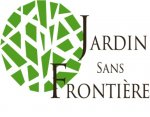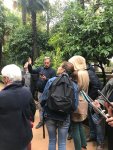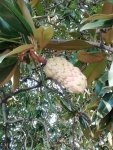accueil site > 45. Archives > Paysage et patrimoine > 12. Pedagogic tools > 17. Pedagogic tools > 0993. 21 To recognise the trees in a garden
-
45. Archives
-
Paysage et patrimoine
-
01. Fiches pédagogiques
Disciplines
-
01. Teaching materials
Disciplines
-
02. Jardin sans frontière : une école pour développer les compétences -clés en Europe
- 04. Partenaires
- 05. Rencontres transnationales
- 14. À l’école du jardin. Mobilités de formation dans les jardins d’Europe
- 15. À l’école européenne du jardin. Paroles de formateurs sur leurs formations "entre pairs"
- 16. A l’école auropéenne du jardin. Paroles d’apprenants sur leurs mobilités Erasmus+
- 19. Petit glossaire "européen" du jardin
- 20. Dissémination
- 21. Exploitation locale du projet
- 03. Un nouvel Erasmus+ : Le bleu européen comme étendard contre l’exclusion des adultes
-
09. Erasmus+ partenariato
-
Cammini del Blu in Europa
- 01. Incontri transnazionali
- 05. Progetti blu di partners
- 10. Percorsi europei del Blu
- 20. Storie blu
- 40. Disseminazione
- 43. Transcultural Carpet Blue
- 45. Missive blu
- 46. Glossario blu
- 47. Schede didattiche "Pedagogia del colore blu in Europa"
- 48. Illustrazioni delle schede didattiche : Mostra delle opere degli studenti
-
Giardino senza frontiere. Una scuola per lo slivuppo di competenze chiave in Europa
- 04. Partners
- 05. Riunioni transnazionali
- 14. Alla scuola del giardino. Mobilità di formazione nei giardini d’Europa
- 15. Alla scuola del Giardino. Parole di formatori sul loro addestramento "tra pari"
- 16. Alla scuola del giardino. Parole dei discenti sul loro Erasmus + Mobilità
- 19. Piccolo glossario europeo del giardino
-
Cammini del Blu in Europa
-
11. Erasmus+ Partnership
- 01. Transnational Meetings
- 05. Blue Projects of partners
- 07. European roads of the Blue
- 10. Blue stories
- 40. Dissemination
- 43. Transcultural Carpet Blue
- 45. Blue Missives
- 46. Blue Glossary
- 48. Roads of the blue : the file
- 50. Illustrations of the pedagogic file : exhibition of works of learners
-
51. Garden Without Borders : A School for Developing Key Competences in Europe
- 04. Partners
- 05. Transnational meetings
- 14. At Garden School. Training mobilities in the gardens of Europe
- 15. At Garden School. Words of trainers on their "peer-to-peer" training
- 16. At Garden School. Learners’ words about their mobility Erasmus +
- 19. Small European glossary of the garden
- 20. Dissemination
-
11. Partenariats Erasmus+
-
01. Les chemins du bleu en Europe
- 01. Rencontres transnationales
- 05. Projets bleus des partenaires
- 10. Routes du Bleu en Europe ...
- 20. Histoires Bleues
- 40. Dissémination
- 43. Transcultural Carpet Blue
- 45. Missives bleues
- 46. Glossaire bleu
- 47. Formation pédagogique : fiches pédagogiques et référentiel de compétences clés et transversales
- 50. Illustrations des fiches pédagogiques : exposition des travaux des apprenants
-
01. Les chemins du bleu en Europe
- 12. Pedagogic tools
- 17. Fiches pédagogiques
- 17. Schede Pedagogiche
-
01. Fiches pédagogiques
- 05. Livre d’or des formations
- 07. Livre d’or des formations Comenius - Grundtvig
- 10. National
- 20. International
-
Paysage et patrimoine
0993. 21 To recognise the trees in a gardenmercredi 7 novembre 2018
PROJECT
With the help of a book and an activity developed on the ground of the Carmen de los Martires in Granada, Spain, make the learners acquainted with the most common trees in the garden. This activity can be carried out in a park, a garden, the green space of a villa or any other natural area.
A guide to the woody plants of the Carmen de los Mártires (Granada) was developed as part of our Garden Without Borders project, thanks to the generous collaboration of Professor Nimis met in the botanical garden of Trieste, during the 3rd transnational meeting.
This tool is a dichotomous key that is now available on the Internet
This tool was used in the learning and training mobility courses that took place in Granada from 16 to 20 October 2018. It enabled us to graphically identify nearly 200 species of trees and trees. shrubs present in the garden of Carmen de los Mártires.
PUBLIC
This methodology has been created and experimented in the Botanical Garden of the University of Granada, Spain, within the frame of the training mobility from October 16 to 20, 2018
![]() by the students with some learning difficulties, aged 16-18, from the high school Agrupamento de Es colas Joao De Deus of Faro, Portugal and the young learners of the Associazione Culturale Acquamarina, Trieste, Italy
by the students with some learning difficulties, aged 16-18, from the high school Agrupamento de Es colas Joao De Deus of Faro, Portugal and the young learners of the Associazione Culturale Acquamarina, Trieste, Italy
![]() by the European (French, Italian, Portuguese and Spanish) teachers of the project in their peer-to-peer training course for whom it is important to observe how this pedagogical method is applied with learners and its impact on the development of their transversal and key competences.
The activity can be developed with learners of different levels, from primary school to university.
by the European (French, Italian, Portuguese and Spanish) teachers of the project in their peer-to-peer training course for whom it is important to observe how this pedagogical method is applied with learners and its impact on the development of their transversal and key competences.
The activity can be developed with learners of different levels, from primary school to university.
KEY COMPETENCES
![]() Communication in the mother tongue
Communication in the mother tongue
![]() Scientific and mathematical competences
Scientific and mathematical competences
![]() Learning to learn
Learning to learn
![]() Social competences and citizenship
Social competences and citizenship
![]() Humanist culture and expression of sensitivity
Humanist culture and expression of sensitivity
![]() ICT competences
ICT competences
OBJECTIVES
![]() To promote the interest in natural sciences through the knowledge of trees
To promote the interest in natural sciences through the knowledge of trees
![]() To develop the ability to observe nature
To develop the ability to observe nature
![]() To learn how to recognize the morphological characteristics of plants
To learn how to recognize the morphological characteristics of plants
![]() To learn names and history linked to the trees
To learn names and history linked to the trees
GARDENS EXPLORED
Carmen de los Martires, Granada, Spain
MATERIALS
![]() Coloured print on adhesive labels (or paper with glue) of the images of each species of plants in the garden
Coloured print on adhesive labels (or paper with glue) of the images of each species of plants in the garden
![]() Notebook, scissors, crayons
Notebook, scissors, crayons
![]() Mobile device (phone or tablet) to identify woody species in situ, with the prior download of the interactive guide (see Developement)
Mobile device (phone or tablet) to identify woody species in situ, with the prior download of the interactive guide (see Developement)
DEVELOPMENT
1.Preparation of the materials
![]() Choosing a site with a large variety of plants, like the Carmen de los Martires
Choosing a site with a large variety of plants, like the Carmen de los Martires
![]() Identifying and choosing a small number of trees representative of the site
Identifying and choosing a small number of trees representative of the site
![]() Realizing and printing a booklet, A3 format, with the following features :
Realizing and printing a booklet, A3 format, with the following features :
Pages 1 and 4 : the front cover will represent an image of the garden or a small map of the site. The back cover must be used to insert a glossary of the words and the botanical terms the students should learn perfectly. Our sample includes information on the shape of the species or on the easiest way to measure the height of a tree with a crayon and a measuring tape.
Pages 2 and 3 : the inside pages contain a brief description of the species selected with reference to popular name, scientific name and the family they belong to, the areas of growth in the garden or in any other place considered. As regards the learning level, the teacher can increase its difficulty by using more complex measures and concepts concerning flowers, leaves and fruit, needing a higher degree of knowledge and a more specific language, to oblige the students to check the glossary and improve the use of scientific vocabulary.
Under each description the booklet will include a space for the prints, each with the morphological details of the species involved
Elicit directions : identify the species and make them correspond with the elements of detail of the images. Cut the detail related to each species and paste it in its space
![]() The teacher can present the activity during a collective visit or an individual work carried out individually by the student
The teacher can present the activity during a collective visit or an individual work carried out individually by the student
![]() In the first case, the teacher can introduce the subject by commenting on some important features of each tree such as , shape, flower colours, smell, bark, etc. and then let the students go freely around the area
In the first case, the teacher can introduce the subject by commenting on some important features of each tree such as , shape, flower colours, smell, bark, etc. and then let the students go freely around the area
![]() In the second case, the teacher can enliven the class activity and give the students a lapse of time to visit the place and carry out the activity individually
In the second case, the teacher can enliven the class activity and give the students a lapse of time to visit the place and carry out the activity individually
To identify in situ woody species, with the mobile device (phone or tablet)
![]() 1 Download and install the free "Key to Nature" app.
1 Download and install the free "Key to Nature" app.
![]() 2 Go to "Online archive"
2 Go to "Online archive"
![]() 3 Choose "Guía interactiva de árboles, shrubs and plantas trepadoras del Carmen de los Mártires"
3 Choose "Guía interactiva de árboles, shrubs and plantas trepadoras del Carmen de los Mártires"
![]() 4 Download the guide, so that it stays in the device’s memory and can be used without a wifi connection. Pour identifier in situ les espèces ligneuses, avec l’ appareil mobile (téléphone ou tablette)
4 Download the guide, so that it stays in the device’s memory and can be used without a wifi connection. Pour identifier in situ les espèces ligneuses, avec l’ appareil mobile (téléphone ou tablette)
![]() 5 Use the guide to identify and verify plant knowledge of the Park
5 Use the guide to identify and verify plant knowledge of the Park
EXTENSION AND ALTERNATIVES
![]() Another way to develop the activity (a more demanding one for the learner) is starting from cards without images and the student taking photos of the morphological details with a camera or the mobile and then printing them in the correct format to include in the booklet
Another way to develop the activity (a more demanding one for the learner) is starting from cards without images and the student taking photos of the morphological details with a camera or the mobile and then printing them in the correct format to include in the booklet
![]() In any case, the learner is obliged to mind the details highlighted by the teacher related to each species. Optimally, these details must correspond to the morphological features allowing the recognition of the species
In any case, the learner is obliged to mind the details highlighted by the teacher related to each species. Optimally, these details must correspond to the morphological features allowing the recognition of the species
![]() An alternative : ask the students to fill out a card for each tree with information on its employment as food, timber, toxicity, or for medicinal purpose, geographical origin, etc.
An alternative : ask the students to fill out a card for each tree with information on its employment as food, timber, toxicity, or for medicinal purpose, geographical origin, etc.
EVALUATION
It takes into account the ability to :
![]() Communicate orally and in writing in the mother tongue
The ability to comprehend the scientific lexis will be assessed on the basis of the words the students will be able to integrate in their vocabulary
Communicate orally and in writing in the mother tongue
The ability to comprehend the scientific lexis will be assessed on the basis of the words the students will be able to integrate in their vocabulary
![]() Improve scientific competences
The student must be able to recognize the basic structures of each tree (leaves, flowers, fruit)
Improve scientific competences
The student must be able to recognize the basic structures of each tree (leaves, flowers, fruit)
![]() Improve digital competences
According to the method privileged by the teacher, the students can use image capture and manipulation as well as the research on the Internet to complete the information on the cards as an extension of the work
Improve digital competences
According to the method privileged by the teacher, the students can use image capture and manipulation as well as the research on the Internet to complete the information on the cards as an extension of the work
![]() Develop awareness and personal cultural expression
Through the identification and knowledge of the species, the student should develop a feeling with the plants that will enable him/her to better understand the environment
Develop awareness and personal cultural expression
Through the identification and knowledge of the species, the student should develop a feeling with the plants that will enable him/her to better understand the environment
![]() Develop social and civic competences
The knowledge of the species enhances the appreciation of the trees as living beings, their role in the improvement of the quality of the urban habitat and the respect for their existence
Develop social and civic competences
The knowledge of the species enhances the appreciation of the trees as living beings, their role in the improvement of the quality of the urban habitat and the respect for their existence
![]() Learn to learn
In the development of the activity, observation is deeply stimulated but, depending on the method adopted by the teacher, it can be necessary to research information and improve the ability to summarise for recording.
Learn to learn
In the development of the activity, observation is deeply stimulated but, depending on the method adopted by the teacher, it can be necessary to research information and improve the ability to summarise for recording.
AUTHORS
Manuel Casares Porcel, José Tito Rojo
Botanical Garden of the University of Granada, Granada, Spain
TRANSLATER
Mary Gino
Association Acquamarina, Trieste, Italie















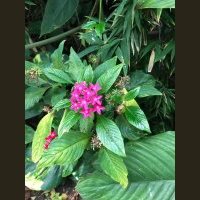
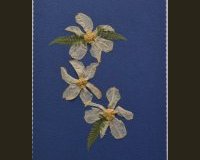
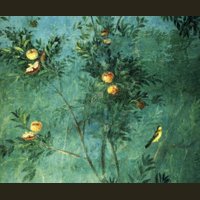
 Version imprimable
Version imprimable